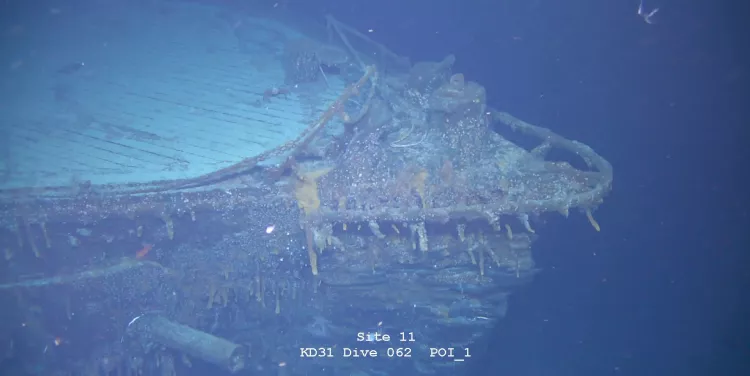Lionfish invades Brazilian waters
First spotted in the Atlantic Ocean off Florida in the 1980s, they later spread across the Caribbean, reshuffling coral reefs and other ecosystems by feasting on fish unfamiliar with the voracious predator.
First spotted in the Atlantic Ocean off Florida in the 1980s, they later spread across the Caribbean, reshuffling coral reefs and other ecosystems by feasting on fish unfamiliar with the voracious predator.
The British merchant steamship SS Mesaba sent a warning radio message to the Titanic on April 15, 1912 while crossing the Atlantic. The message was received by the Titanic – which was advertised as unsinkable – but did not reach the main control centre of the vessel.
Later that night, the supposedly unsinkable Titanic hit an iceberg and sank on her maiden voyage, taking 1,500 lives and becoming the world’s most infamous shipwreck.
At the annual meeting of the International Commission for the Conservation of Atlantic Tunas (ICCAT) last week, North Atlantic fishing nations have pledged to ban catches of the shortfin mako shark.
The efforts to secure the ban was led by the UK, Canada and Senegal. The move means that the countries agreed to end overfishing immediately and to gradually achieve biomass levels that were enough to support maximum sustainable yield by 2070 for the species, according to an article in The Guardian.
Researchers have discovered that the tiger sharks in the Atlantic are genetically different from the ones in the Indo-Pacific Ocean, according to a study published in the Journal of Heredity on 10 August 2021.
According to co-author Professor Mahmood Shivji, director of the Save Our Seas' Shark Research Centre, the two populations had not intermingled to reproduce for a long time. “This long-term separation between Atlantic and Indo-Pacific tiger sharks has resulted in them developing into separate populations, each with its own unique genetic diversity.”
During the past decade, the Northwest Atlantic’s Gulf of Maine and western Scotian Shelf have been warming more rapidly than most of the global ocean
As this region has warmed, changes in ocean circulation have driven the critically endangered North Atlantic right whale population from its traditional and protected habitat, exposing the animals to more lethal ship strikes, disastrous commercial fishing entanglements and greatly reduced calving rates.
You will be working with the Conservation and Fisheries Team to deliver the objectives of the Ascension Island Marine Protected Area.
It is essential that you have a BSc (Hons) in marine biology or a related subject, or significant relevant experience in this field. In addition, you should be a qualified scuba diver with a minimum of 200+ logged dives and hold an advanced SCUBA qualification (PADI Advanced Open Water or equivalent).
The wreck of the German battlecruiser SMS Scharnhorst, sunk by the Royal Navy during the First World War with the loss of all her crew and Admiral Graf von Spee has been found in the South Atlantic. SMS Scharnhorst, the flagship of the East Asia Squadron which was once the scourge of the Royal Navy, went down with most of the rest of the formation on December 8, 1914, in the Battle of the Falkland Islands.
The battlecruiser sank on Dec. 8, 1914, with more than 800 crew members on board, including German Adm. Maximilian Graf von Spee.

The 10,850-ton armoured cruiser HMS Hampshire departed Scapa Flow in Orkney on 5 June 1916 on a voyage around the north cape of Norway to the port of Archangel in northern Russia. She was carrying Lord Kitchener, the Secretary of State for War, and his staff to Russia to discuss mutual war aims and strategy.
Now limited to the area off Cape Hatteras where the Civil War ironclad USS Monitor sank in 1862, the proposal is to extend NOAA’s Monitor National Marine Sanctuary to include ships sunk in what is known as “Torpedo Alley.” About 1,200 U.S. servicemen lost their lives in shipwrecks off the North Carolina coast – about half the total who died at Pearl Harbor.
The bell was successfully recovered the 7th of August. Mr. Allen's team led the operation using his yacht M/Y Octopus, which is equipped with a state-of-the-art remotely operated vehicle (ROV). Once restored, the bell will respectfully serve as a tangible and fitting memorial for the 1,415 lives lost when the Bismarck sunk the ship in the North Atlantic.